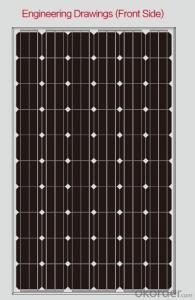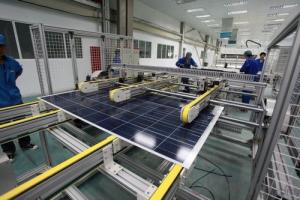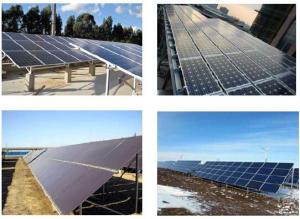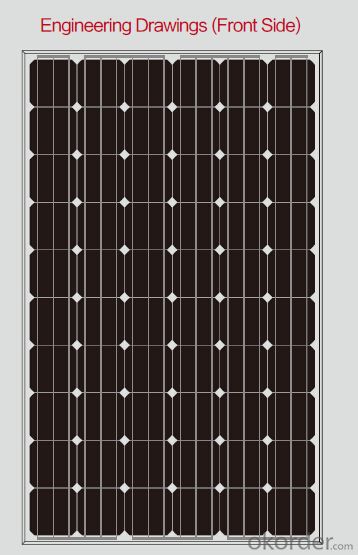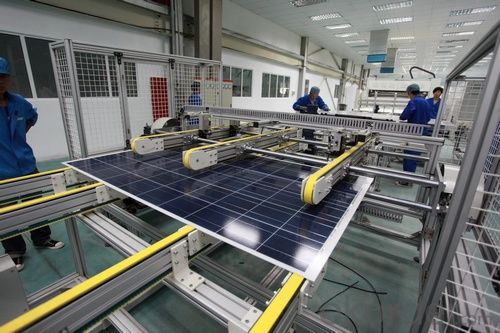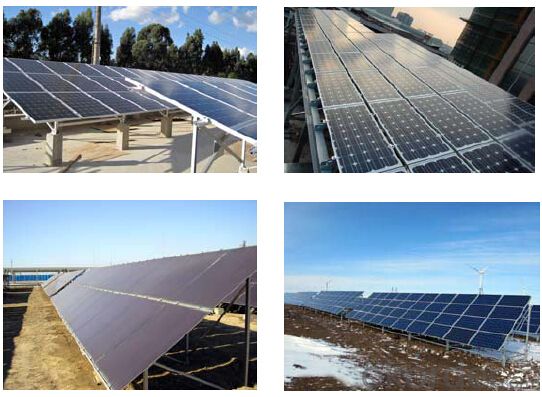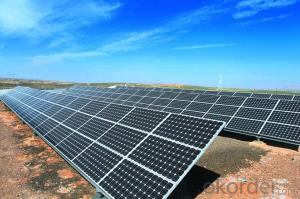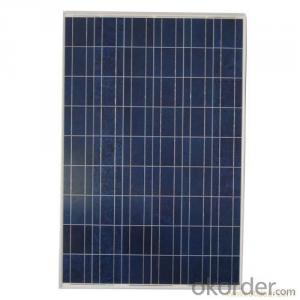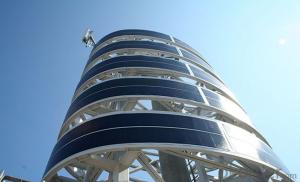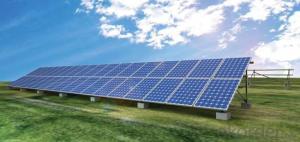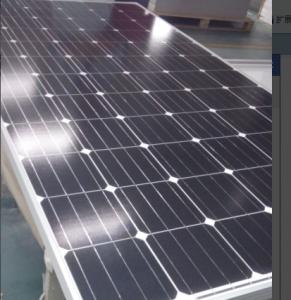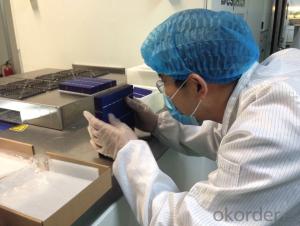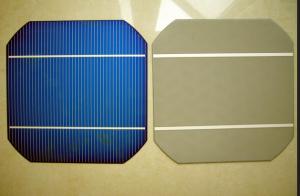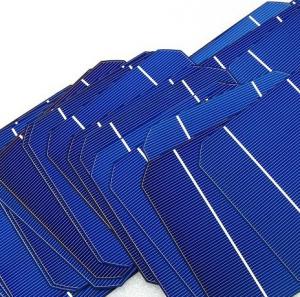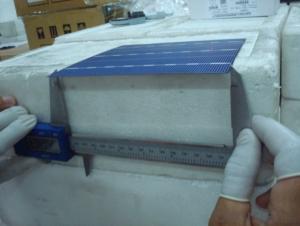Tecstar Solar Cells - High Efficiency and High Power Solar Modules
- Loading Port:
- Shanghai
- Payment Terms:
- TT OR LC
- Min Order Qty:
- 728 pc
- Supply Capability:
- 2000000 pc/month
OKorder Service Pledge
OKorder Financial Service
You Might Also Like
Specification
Advantage:
1.Widely using of the most popular and mature type of modulesfor on-grid system.
2.Specifications subject to technology and test conditions,GSUN Solar reserves the right of final interpretation.
3.Leading manufacturing technology in PV industry, strictly controlling the quality of raw materials and the process of producing.
4.100% EL inspection, ensures modules are defects free.
5.Cells binned by current to improve module performance.
6.Anti reflective glass. Not only to increase the light absorption, but also to make the module has the function of self-cleaning in water environment, effectively reducing the power loss caused by dust.
7.Outstanding performance in low-light irradiance environments.
8.Excellent mechanical load resistance: Certified to withstand high wind loads(2400pa) and snow loads(5400pa).
9.High salt and ammonia resistance.
10.Positive power tolerance:0-+5w.

Specification:
Temperature Coefficient
NOCT | 45℃±2℃ |
Temperature Coefficients of Isc (%/℃) | 0.0492 |
Temperature Coefficients of Voc (%/℃) | –0.3374 |
Temperature Coefficients of Pmp (%/℃) | –0.4677 |
Performance Parameters
31.9 | |
Max Power Current Imp(A) | 7.85 |
Open Circuit Voltage Voc(V) | 37.7 |
Short Circuit Current Isc(A) | 8.85 |
Max Power Pm(W) | 250 |
Mechanical Data
Dimension | 1655 x 992 x 40 mm |
Weight | 22.5kg |
No. of Cells and Connections | 60 (6 x 10) |
Tolerance | 0~+5W |
Cell | Monocrystalline Cell 156 x 156 mm |
Packing | 624 Pcs/40ft(H) Container |
Warranty
5 years product warranty
10-years 90% of Min. rated output power,and 25-years 80% of Min. rated output power warranty
Comprehensive Certificates:
CE Certificate
ISO 9001:2008:Quality management systems
IEC61215、IEC61730
TUV and UL
IDCOL for Bangladesh
Feature:
- High efficiency, multicrystalline silicon solar cells with high transmission and textured glass deliver a module effi ciency of up to 16.0%,minimizing installation costs and maximizing the kWh output of your
system per unit area.
- Tight positive power tolerance of 0W to +5W ensures you receive modules at or above nameplate power and contributes to minimizing module mismatch losses leading to improved system yield.
- Top ranking in the “TÜV Rheinland Energy Yield Test”
FAQ:What's your products warranty?
No less than 90% within 10yrs and no less than 80% within 25yrs.
FAQ:What's the power range can you supply?
We can supply from 5W to 315W solar panels.
FAQ: Can you design the solar system?
Yes, We can supply the battery and controller/inverter for your system with the solar panels together.
FAQ:How much Power can I expect to get from my Solar PV’s?
Typically an installed 1kWpk array will produce 800kWh/year. 2kWpk will produce 1600kWh/year and so on.
Why are PVs rated in kWpk rather then kilowatts?
kWpk means the power expected to be generated under the comparatively ideal conditions known as STC. In other words, a 100Wp panel will produce a maximum of 100W in peak (STC) conditions - this is equivalent to a bright sunny midsummer day in the UK.
How can I connect my Solar PV system to the grid?
You will need to use a grid-tie inverter. If you wish to get paid for the electricity you produce, you will need to ensure a G83-certified inverter is used and that it is installed by a Microgeneration Certification Scheme member whose membership number will need to be provided to your electricity supplier.
How much will I get paid for the electricity I feed into the grid?
If you install a qualifying small system (1-4kWpk) in the UK before October 2012 you will get paid 16 pence for every kWh you generate regardless of whether you use it yourself or export it to other users. This is a generation tariff or feed in tariff. It will go up each year in line with inflation. If you also use the electricity you have generated this means you do not have to buy it from the electricity company and so you will save around 11-15p per kWh at todays prices (Prices subject to change of course). Energy you generate but don't use yourself, i.e. you export it to the electricity company, will attract another payment to you of 4.5p per kWh. This payment is also index linked to the RPI so it will increase in line with inflation.
Is it true that I can get my electricity meter can spin backwards?
Not usually, nor is it legal to do this. The very old meters may cause this to happen however the company installing your PV will advise you if you need to ask for a meter replacement from the company supplying your electricity. This is usually free of charge.
- Q: What is the role of anti-reflective coatings in solar cells?
- The role of anti-reflective coatings in solar cells is to minimize the reflection of sunlight that hits the surface of the solar cell. By reducing reflection, more light can be absorbed by the solar cell, thus increasing its overall efficiency and power output. This allows for better utilization of sunlight and helps to maximize the energy conversion process in solar cells.
- Q: Can solar cells be used in emergency lighting?
- Yes, solar cells can be used in emergency lighting. Solar-powered emergency lights are designed to provide illumination during power outages or emergencies by utilizing solar panels to convert sunlight into electricity, which is then stored in batteries for later use. This makes them a reliable and sustainable option for emergency lighting solutions.
- Q: Can solar cells be used in mobile devices?
- Yes, solar cells can be used in mobile devices. In fact, there are already several mobile devices available in the market that are equipped with solar panels to harness solar energy and charge their batteries. These solar-powered mobile devices are particularly useful in situations where access to electricity is limited or unavailable.
- Q: Are solar cells affected by pollution?
- Solar cells can be affected by pollution, particularly air pollution, as it can reduce the amount of sunlight that reaches the cells. This can result in a decrease in their efficiency and overall energy production. However, regular cleaning and maintenance can help mitigate the impact of pollution on solar cell performance.
- Q: Can solar cells be used for powering space missions?
- Yes, solar cells can be used for powering space missions. Solar cells, also known as photovoltaic cells, convert sunlight into electricity. They have been widely used in space missions as they provide a reliable and renewable source of energy. Solar panels equipped with these cells are often deployed on spacecraft to generate power for various systems and instruments. The abundance of sunlight in space makes solar cells a practical and efficient option for powering space missions.
- Q: Can solar cells be used for powering submarines?
- Yes, solar cells can be used for powering submarines to some extent. However, due to limitations in surface area and the amount of sunlight that can penetrate the water, solar power alone is not sufficient to power submarines for long durations or at great depths. Submarines typically rely on a combination of diesel-electric engines and rechargeable batteries for propulsion and power generation.
- Q: How are solar cells connected to the electrical grid?
- Solar cells are connected to the electrical grid by using an inverter that converts the direct current (DC) produced by the solar cells into alternating current (AC) that is compatible with the grid. This AC power is then fed into the electrical grid through a bi-directional meter, allowing excess energy generated by the solar cells to be supplied to the grid and any deficit to be supplemented from the grid.
- Q: What is the usage of solar cells?
- Solar cells can generate power supplies for households and factories where there is a need for a lot of energy.
- Q: Can solar cells be used for powering disaster relief operations?
- Yes, solar cells can be used for powering disaster relief operations. Solar cells are a reliable and sustainable source of energy that can be used to generate electricity in areas affected by natural disasters. They can power essential equipment and devices such as communication systems, medical devices, lighting, and water purification systems, providing crucial support to disaster-stricken areas where traditional power sources may be disrupted or unavailable. Additionally, solar cells are portable and can be easily deployed in remote or inaccessible locations, making them an ideal solution for powering disaster relief operations.
- Q: Can solar cells be used in cold climates?
- Yes, solar cells can be used in cold climates. Although solar cells are more efficient in warmer temperatures, they can still generate electricity even in cold climates. Additionally, advancements in solar technology have made it possible for solar cells to work efficiently in low-light and snowy conditions.
Send your message to us
Tecstar Solar Cells - High Efficiency and High Power Solar Modules
- Loading Port:
- Shanghai
- Payment Terms:
- TT OR LC
- Min Order Qty:
- 728 pc
- Supply Capability:
- 2000000 pc/month
OKorder Service Pledge
OKorder Financial Service
Similar products
Hot products
Hot Searches
Related keywords
